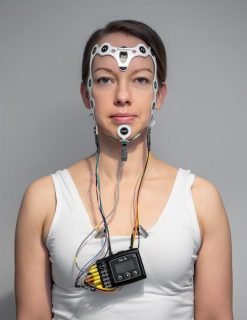Eastern Finland, 10th December 2020. New research from the University of Eastern Finland, shows the extent to which sleep apnea puts a strain on the heart and causes reduced daytime alertness. Longer nocturnal respiratory events in patients with obstructive sleep apnea (OSA) cause higher immediate heart rate variability. It also causes greater changes in beat-to-beat intervals which are associated with reduced daytime alertness.
Sleep apnea affects a billion people
Obstructive sleep apnea affects approximately 1 billion people worldwide. It is one of the most prevalent sleeping disorders, putting a great strain on national economies and on public health. Nocturnal respiratory events, be they complete or partial blocking of the airways. This often causes repeated oxygen desaturations and interrupted sleep in patients with OSA, leading to abnormal nervous system function. Abnormal hyper-activation of the sympathetic nervous system affects heart function and cardiovascular regulation by increasing OSA patients’ nocturnal heart rate and by reducing their long-term heart rate variability.
Increased risk of heart disease
These changes have been shown to significantly increase the risk of cardiovascular diseases. In addition, hyper-activation of the sympathetic nervous system can prevent patients with OSA from getting enough deep, restorative sleep, which is why they often feel tired and less alert during the day. Hyper-activation of the sympathetic nervous system can keep the body in a state of alertness over the long term despite sufficient deep sleep, and this can be seen in, e.g., elevated daytime heart rate in patients with OSA.
Heart rate changes
Two recent studies from the University of Eastern Finland have explored the immediate effect of respiratory events on heart rate variability, as well as the association of OSA patients’ nocturnal heart rate changes with their alertness.
A study published in Scientific Reports yesterday shows that the type and duration of individual respiratory events has an effect on heart rate and heart rate variability both during and after the event. A longer duration of a respiratory event caused greater changes in heart rate as well as higher ultra-short-term heart rate variability, and both of these changes were greater during complete obstruction of the airway.
What the study says
“The study sheds important new light on the cardio-vascular load nocturnal respiratory events cause in patients with OSA,” the study’s lead author Early Stage Researcher Salla Hietakoste from the University of Eastern Finland says.
The other study, published in ERJ Open Research earlier this year, found that changes in pulse rate measured via finger photo-plethysmogram were associated with performance in the psychomotor vigilance task (PVT) in patients with OSA. Patients who performed poorly in the PVT had a significantly higher nocturnal heart rate.
“By taking a better look at poly-somnography data for respiratory events and heart function, we might be able to identify patients who have a higher risk for reduced vigilance and alertness,” Postdoctoral Researcher Samu Kainulainen from the University of Eastern Finland says.
 Men at more risk than women
Men at more risk than women
In both studies, the findings were more pronounced in men. The findings suggest that the abundance of data available from current clinical sleep studies could be utilised more extensively in the future. Data relating to heart rate and heart rate variability could possibly be used alongside the current diagnostic parameters for OSA in order to get a more representative clinical picture and to better identify high-risk patients.
Sleep apnea research details
The studies have received funding from the Academy of Finland, Business Finland, Kuopio University Hospital, Seinäjoki Central Hospital, Tampere University Hospital, Alfred Kordelin Foundation, the Research Foundation of the Pulmonary Diseases, Instrumentarium Science Foundation. It also includes Kuopio Area Respiratory Foundation, Orion Research Foundation, Paulo Foundation, Päivi & Sakari Sohlberg Foundation, the Finnish Cultural Foundation, the Finnish Anti-Tuberculosis Association Foundation, and Tampere Tuberculosis Foundation.
Research Resources
Early Stage Researcher Salla Hietakoste. (a) uef.fi
Postdoctoral Researcher Samu Kainulainen, PhD, uef.fi
Docent, Senior Researcher Sami Myllymaa, uef.fi
Sleep Technology and Analytics Group, https://www.uef.fi/fi/web/
Research articles:
Hietakoste et al, Longer apneas and hypopneas are associated with greater ultra-short-term HRV in obstructive sleep apnea, Scientific Reports, 2020; 10: 21556. https://doi.org/10.1038/
Kainulainen et al, Increased nocturnal arterial pulsation frequencies of obstructive sleep apnoea patients is associated with an increased number of lapses in a psychomotor vigilance task, ERJ Open Research, 2020; 6: 00277-2020. https://doi.org/10.1183/





![women [longevity live]](https://longevitylive.com/wp-content/uploads/2020/01/photo-of-women-walking-down-the-street-1116984-100x100.jpg)









